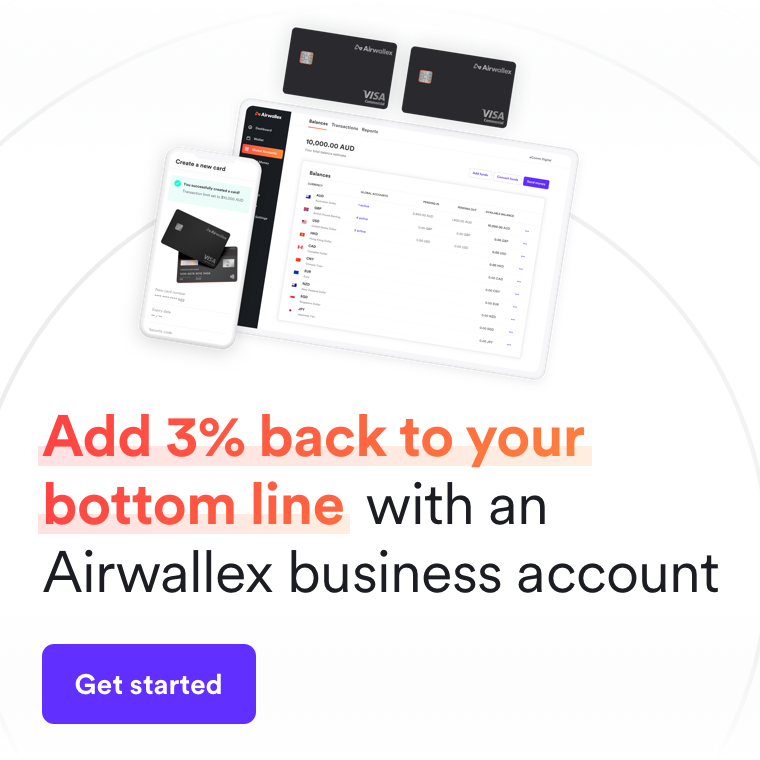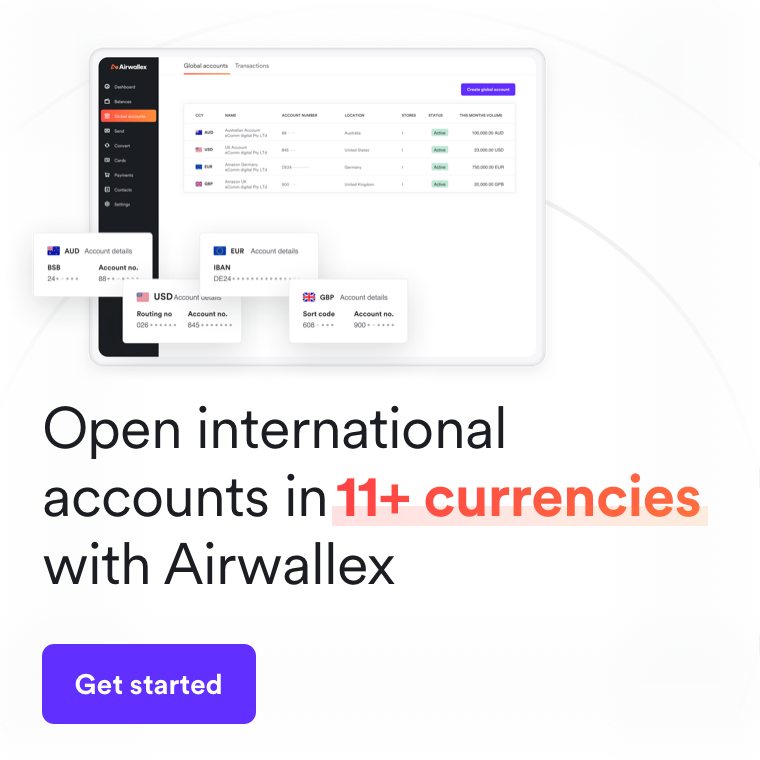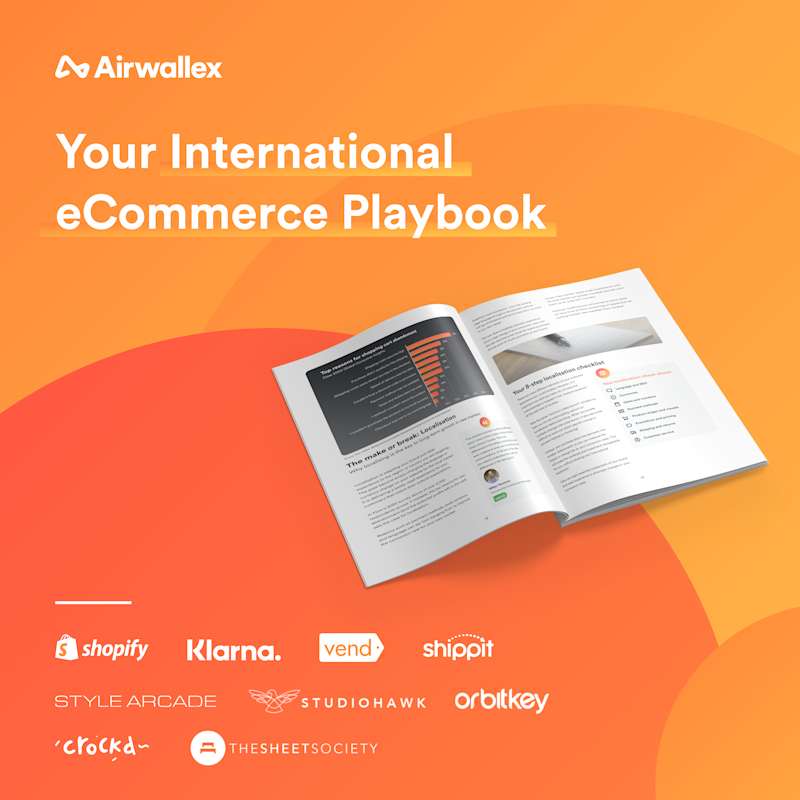How to craft a rock-solid international expansion strategy

Today we’re going to discuss a topic that most eCommerce store owners agree you should be preparing for (most aren’t) from day one:
Cross-border eCommerce.
When you think about cross-border eCommerce, your mind likely sees the massive opportunity. It’s hard to miss a $4.5T market that’s been on an upward trajectory for the past decade.

And as an eCommerce store owner, you’re likely already selling internationally. In fact, 57% of global online shoppers make purchases from overseas retailers.
Which means you may have profited from this global market without even allocating resources, laying out supporting infrastructure, and developing a go-to-market (GTM) strategy.
The opportunity is clearly there. But the real question is: is your store up for cross-border success?
Because to truly compete in this massive market you have to nail the global customer experience.
And by the end of this post, you’ll know exactly what you need to do to start selling cross-border.
When Should You Start Planning for Cross-Border Expansion?
In our webinar on cross-border eCommerce, we asked eCommerce store owners this question:
“At what stage should businesses start planning to expand and sell internationally?
Here are the responses:

We couldn’t agree more with the majority vote. There’s absolutely no reason you shouldn’t be preparing for cross-border commerce from day one.
Think about it - aside from the obvious upside, the barriers to entry are zero and you can dip your toes to test the market (almost) risk-free.
Now, like some of our webinar attendees, you may be thinking: ”why should I prepare from day one if I’m not considering expanding cross-border?”
The short answer is: because your competitors are. And even if you aren’t in a saturated, local market, the competition will inevitably saturate it.
So now that it’s clear that you need to set your eCommerce store up for cross-border success, let’s explore the two approaches you need to have in mind.
The Two Approaches to International Expansion
Without proper planning and testing, expanding cross-border can be an expensive waste of time. You need a clear plan on how you’re going to dip your toes into the market.
1. Test First, Scale Second.
The biggest mistake you can make in business is making a significant upfront investment before validating your product and understanding how your brand resonates with target customers.
The only way to avoid this is through low-cost experimentation. You need to rigorously test, distil key learnings, and iterate. That’s the core of a key framework outlined in the Lean Startup: Test - Learn - Iterate. At every iteration, the most valuable yield is a key learning.
Lucky for us, the plethora of tools we have at our disposal have allowed for rapid testing with minimal cost. For example, you can easily test your products on marketplaces that serve your target region or country to understand what works before going all in.
The catch here is that the only way to know if your experiment was a success is to plan and commit for long enough to collect data that will point you in the right direction.
2. Plan, Commit and Invest Enough to Get a Clear Picture of Success
In order for your testing to be effective, you need to commit and invest enough resources to get a comprehensive picture of success.
That means you need to have your eCommerce website optimised for international channels by localising currencies, language, and the overall customer experience (we’ll come back to this in more depth). But without localising your website, you’ll have skewed data.
And you need accurate data to tell you to keep doing more of what you’re doing or to stop and test something new.
Once you find out what works, double-down on what you’re doing and devote 80% of your time and resources.
To limit the time and resources you invest during testing, you need to:
Set specific, tangible goals (a singular, numerical value works best)
Set a short timeline to bound yourself to artificial time constraints
How to Identify Potential New Markets
Picking the Right Next International Market
The target region you select should be based on the data you already have, your competitors, and cultural fit.
A great starting point in picking your target region is checking your website traffic in Google Analytics and segmenting it by top geographic locations. This will give you a good idea of where your potential customers are already visiting your store from.
You can also do competitor research to see which geographic regions your competitors are active in. The more competitors you have active in a region, the better. It means that there’s already a market for your products.
Lastly, you should be thinking about cultural fit and similarities between your target region and home country. The easiest cross-border move you can make is targeting countries that share the same language and are geographically close.
Choosing Effective Distribution Channels
As we mentioned earlier, before launching a localised version of your store, consider experimenting with marketplaces.
Over 60% of global online sales in 2020 took place on marketplaces, which means there’s a massive audience you can use to run tests even if you lack brand awareness.
Just look at the number of people you could test your product within these marketplaces:

Source: Statista
Testing your entry into a cross-border region through marketplaces greatly reduces risk, but also has two major drawbacks:
Negatively impacting margins
Losing valuable customer data that you would capture on your store's website
And we’ve laid out a roadmap to testing your products on these key marketplaces in this post for Australian eCommerce store owners who want to sell on Amazon US.
But marketplaces aren’t the only way to experiment with new markets. Here are 3 different expansion options:
1. Sell Globally from your Home-Country eCommerce Store
This works well if you’re targeting a region that is geographically close and similar to yours in language and culture. For example, if you’re an Australian eCommerce store, try targeting New Zealand.
This has worked extremely well for Australian owned eCommerce business Bedhead & Hats, who successfully sell to their Kiwi neighbours.
In the next section, we’ll look at how to accept multiple currencies on your store and navigate different shipping options.

2. Experiment with a Wholesale Channel
Launching a wholesale channel might sound daunting. But it really just means selling your products through brick-and-mortar stores in your target region. It’s low risk and it’ll reveal whether other business owners believe your product resonates with an international audience.
3. Experiment with Resellers
If your products perform well in a specific sales channel locally, consider reaching out and partnering with 3rd parties already embedded in that sales channel.
For example, if you sell essential oils, you can use spas to sell your product.
How to Nail Localisation and Optimize the Global Customer Experience
Simply put, localisation is changing the experience of your eCommerce site to mirror the language and currency of the region or country you're targeting.
For example, you could create multiple copies of your site tailored to your target regions. But unless you have deep pockets, this can be painful and expensive to implement. Thankfully, there are tools that can help you localize the customer experience without creating multiple websites.
Customer Experience
While there is a lot of overlap between User Experience (UX) and Customer Experience (CX), CX takes a holistic view of all the interactions a customer has with your brand. From customer service to advertising and product delivery - all of these impact your customer’s experience.
I’d argue that CX is one of the most important factors that differentiate your brand from your competitors. In fact, a study by Oracle found that 86% of consumers will pay more for a better customer experience.
In the context of selling cross-border, this means localising the entire customer experience.
In the experimentation stage, you can offer a local customer experience by:
Setting up a landing page that redirects visitors based on their country
Using apps like the one mentioned earlier or this Geo Button app that detects a visitors region based on IP address and redirects them to the relevant store
Language
Up to 75% of shoppers won’t consider buying from a site that isn’t in their main language.
That means you need to translate every facet of your website, including things like:
Emails
Creative assets
Product descriptions
Landing page content
You can imagine how much work this can be. When I was running an eCommerce store, the only way to do this was to hire a translation agency and an SEO specialist to ensure my content was optimised.
Today, you can easily localise language using SEO-friendly language subdirectories to get- up-and-running quickly with apps like Localizer.
Product and Promotions
As we mentioned, all facets of your eCommerce store need to be localised.
That means product descriptions, sizing charts and all related promotions & advertisements need to be translated into your target regions language. This should also include English variations for the US and the UK/Australia.
You should also keep in mind that national holidays and popular shopping seasons may differ in your target region. Keep these top of mind when planning your approach.
Currency & Payment Methods
Currency is one of the easiest elements of your website to localise because of the myriad, built-in tools available that allow you to convert currency in real-time. Your visitors should be able to view pricing in their home currency, as well as checkout and be charged in it to avoid international transaction fees.
When it comes to payment methods, you should be providing all the preferred payment options that your shoppers in your target region use. It’s best to research what payment methods are most commonly used in your target region and include them in your list of options.

Shipping
The most important factor to consider with shipping is the proximity of your target market to your home market.
If your plan is to target similar, neighbouring geographic regions, the cost of setting up an international warehouse far outweighs international shipping costs.
For experimentation purposes, the most effective thing you can do is ship internationally from your home country or outsource fulfilment to a third-party logistics company.
Set up the Financial Infrastructure to go Global
Depending on the region you’re targeting, you’ll want to be able to collect payments from your customers in their preferred currency.
Unless your home-country bank offers multi-currency accounts, accepting payments and doing business in your customer's preferred currencies will be costly. Expect charges in the way of poor FX rates, coupled with international transaction fees which both easily eat into your margins.
Costs aside, you also need a bank account that can integrate with key payment providers and online marketplaces. And most traditional banks are years behind in this space.
You need a bank that allows you to open a global account without the time-consuming legal complications and unnecessary conversions.
Time to go Global?
Expanding your business can be frustrating yet extremely rewarding.
The real question here is: are you up for a challenge?
If you’re in it for the long term, the answer should be a resounding yes. There’s no reason you shouldn’t be preparing your eCommerce store for international growth from day one.
Get your complimentary 36-page International eCommerce Playbook to build your complete strategy. From identifying your new marketing, validating demand to scaling your shipping for long-term growth - this guide has you covered.

Ready to scale your business with our business account? Get more from your spending with our free multi-currency virtual cards. Open a foreign currency account with us and say goodbye to high foreign exchange rates and bank transaction fees. You can make international money transfers in multiple currencies, in one business day or less.
Related article: The Best Payment Gateways for International eCommerce
Posted in:
Online payments

